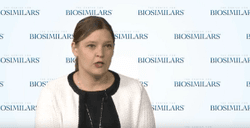Stakeholders Summit: Provider Education on Biosimilars - Episode 4
US Versus EU Education on Biosimilars
Gillian Woollett, MA, DPhil: So, what I’m hearing a lot of is basically that the business model is not relevant to the safety, efficacy, and quality of these products. The FDA has made that determination; they then need to help get the message out. So, do you believe that the primary source being FDA is essential to the physicians, the stakeholders you work with? How does the dissemination by others make a difference, or doesn’t it? If the FDA is the primary source, is that the only source? Can we accept European analyses? Are they pertinent, or does it all have to come through the FDA?
Kashyap Patel, MD: So, probably there’s a difference in the European healthcare market and the US healthcare space. In Europe, you have the government-controlled contracting system. If the government decides they need for a common entire country, it’s going to be utilization, and then they’ll go with that.
In the US, you have to realize that the FDA’s role kind of pretty much is done when the information is sent out, but then you have to jump through the hoops of physicians, you have…[GPOs, group purchasing organizations], you have a contracting structure. Here, like, 50 states—and each state has its own managed Medicaid plans. You have Medicare Advantage plans, and you have pharmacy benefit managers. So the system is a lot more complex in the US compared to Europe.
So my suggestion is, yes, we definitely need the reassurance about the safety, efficacy, immunogenicity, and other relevant parameters of the biosimilar class as a drug class. But for the utility pattern, for the end users, unless physicians who are the gatekeepers of prescribing medicines—unless the message is out to them, either through national meetings, associations, not-for-profit educational utilization forums like this one—it’s not going to have an uptake. So no matter how many things we do to FDA following the [EMA European Medicines Agency] model, in the US, at the end of the day, the part of panel, the prescription of physicians, is the one that will determine the utilization?
Gillian Woollett, MA, DPhil: Yes, that’s where it’s worth emphasizing…and then, Juliana over to you…that most of these medicines are both prescribed but also administered by the physician. And in that sense, they’re a little bit different from a lot of the drugs where they’re dispensed in pharmacies separately from the person who prescribes them. So I just want to make that point clear that the physician is intimately involved in both prescribing and administering the medicines. Juliana, you had a point there?
Juliana Reed: No, I agree. But I do think…the physician plays a very, very key role in all of this. So does the insurer.
Kashyap Patel, MD: Exactly.
Juliana Reed: The insurers need to provide access to these products. The insurers and the [PBMs, pharmacy benefit managers] need to cover these products. But the FDA needs to combat the misinformation.
Gillian Woollett, MA, DPhil: What we’re thinking, then, is a catch-22.
Juliana Reed: Yes.
Gillian Woollett, MA, DPhil: Because the biosimilar cannot say it’s better, then. Therefore, most physicians, most providers, could say, “Well, if we stick with the reference, that’s fine; we’re getting that option available to our patients.” So, we’ve got to level the playing field so that the value in terms of competitive pricing, alternative supply of the biosimilar, can contribute, get market share, and be part of this multisource marketplace that we now see in Europe.
Juliana Reed: Yeah, a competitive marketplace. And you’re proactively engaged across stakeholders to support biosimilar uptake. It’s not going to just happen if not all the stakeholders are engaged. I’ll talk a little bit about what Carlos mentioned about what we did with EMA when we first launched, and the EMA had their congresses and continue to have them. Because we don’t have that model in the US, the Biosimilars Forum, of which we’re members, started that model independently, and the FDA—every few months we have over 60 stakeholder groups to a workshop and the FDA is there, the EMA is there. We have multiple physician groups, pharmacy groups, patient groups. Payers are there. It’s about supporting the biosimilars market. What do we need to do? And we started just with education and how we can get that. And as you mentioned, everyone has different information, and that’s why it’s very key that we go back to the one trusted source of information and education about biosimilars, the FDA. We also have to simplify this. We’ve made it very complicated. And really the source, the FDA—there are no clinically meaningful differences in a biosimilar, and the safety and efficacy is there. It’s that simple. We need to simplify it.
Gillian Woollett, MA, DPhil: And that’s what we’ve seen in Europe. So maybe the most pertinent information from Europe is in their multiple, multiple million days of patient treatment with these products, that is in 10 years what they’ve seen.
Juliana Reed: Ten years.
Carlos Sattler, MD: Seven hundred million patient days of experience over 10 years and no difference from a clinical perspective. No unexpected adverse events that you otherwise would not see with a reference product. That’s a lot of experience.
Juliana Reed: And the EMA published that. The EMA—so the authorities, the regulatory authority published that information and those statistics in their educational materials for healthcare providers.


